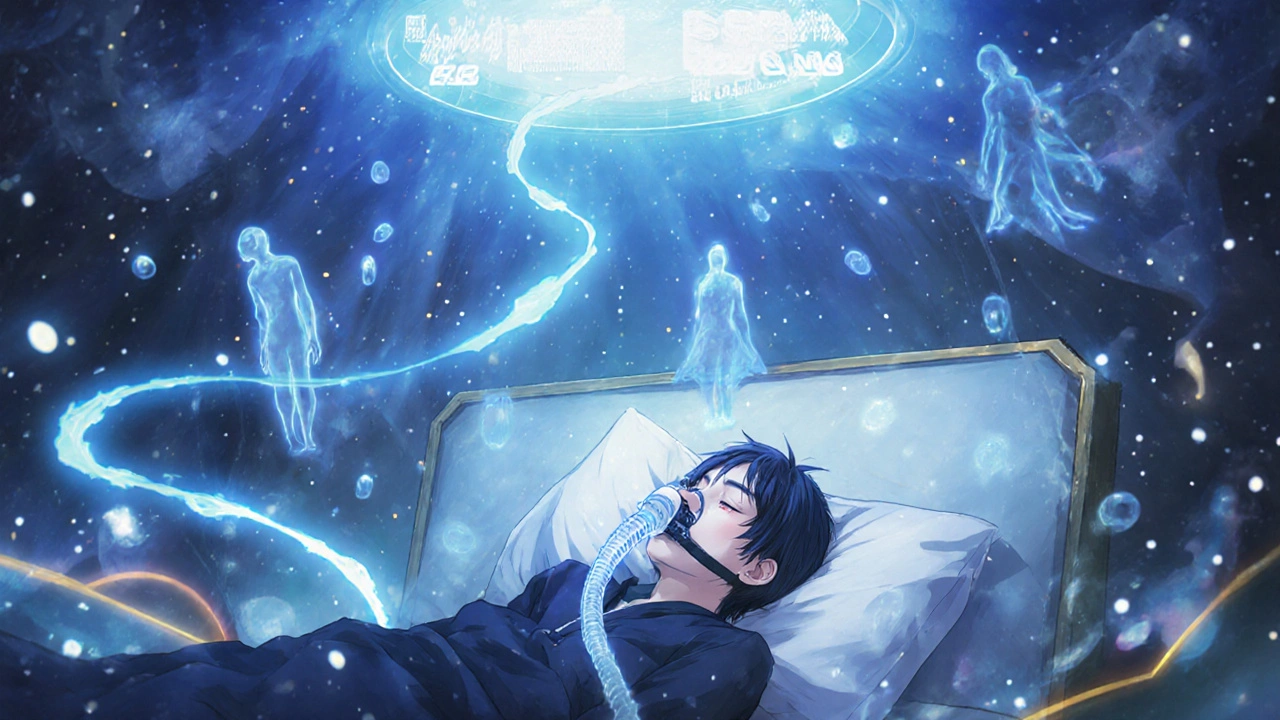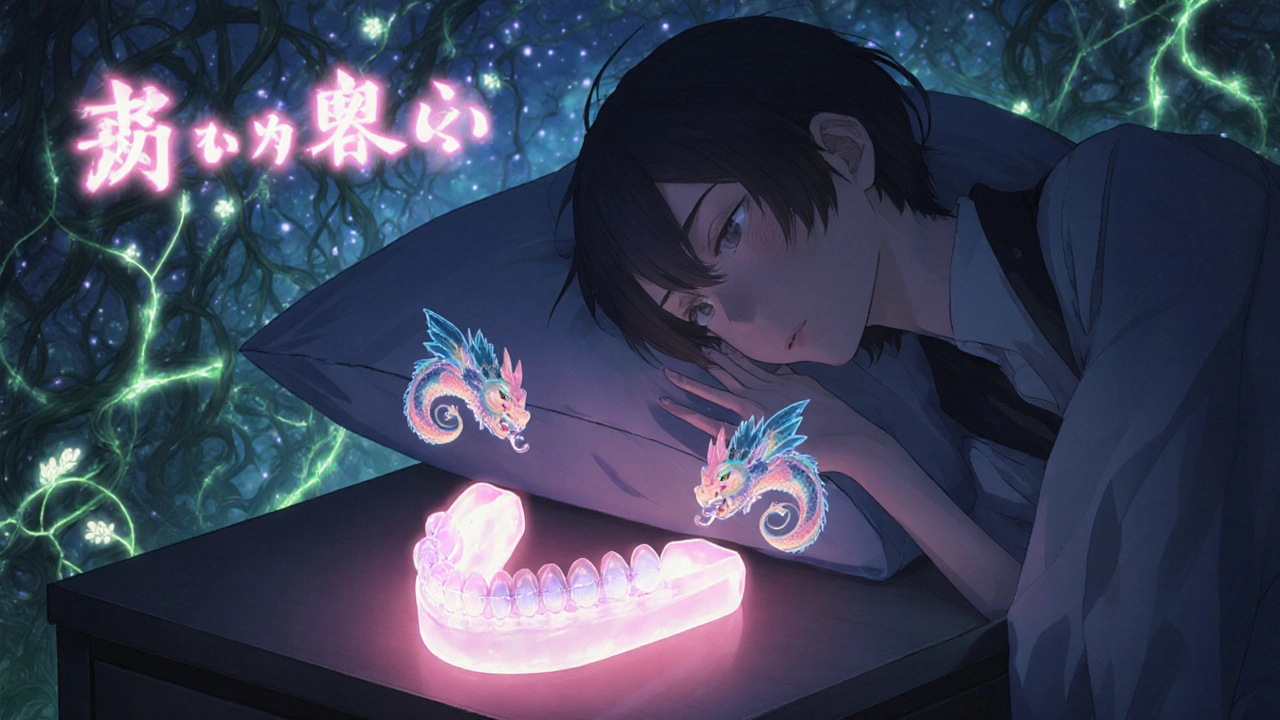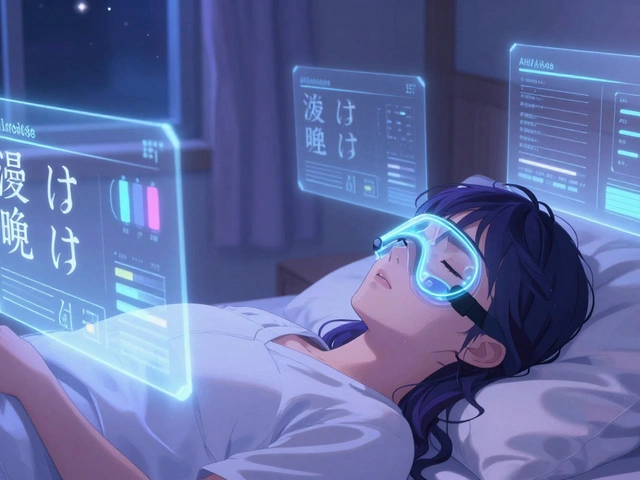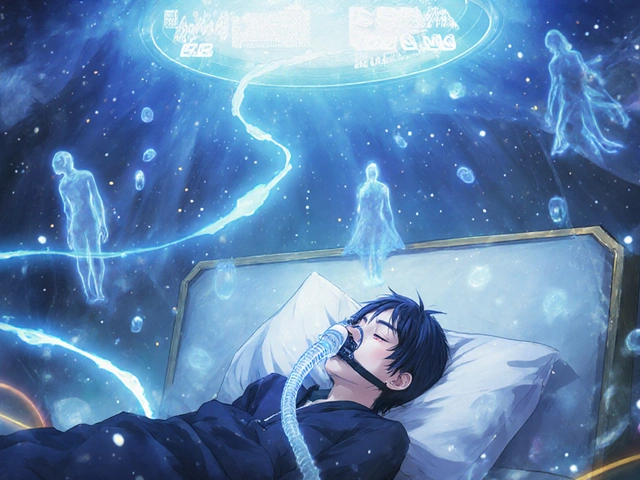Obstructive Sleep Apnea: CPAP Therapy and Alternative Treatments

What Is Obstructive Sleep Apnea?
Obstructive sleep apnea (OSA) happens when the muscles in the back of your throat relax too much during sleep, blocking your airway. This causes brief pauses in breathing-sometimes dozens of times an hour-that wake you up just enough to breathe again, but not enough for real rest. You might not even remember these wake-ups, but your body does. The result? Exhaustion, brain fog, loud snoring, and a higher risk of high blood pressure, heart disease, and stroke.
It’s not rare. About 1 billion people worldwide have OSA, and in the U.S. alone, 34% of adults between 30 and 70 are affected. Yet, many don’t know they have it. If you wake up gasping, feel tired even after a full night’s sleep, or your partner says you stop breathing at night, it’s worth getting checked.
CPAP Therapy: The Gold Standard
Continuous Positive Airway Pressure (CPAP) therapy has been the go-to treatment for OSA since the early 1980s, developed by Australian doctor Colin Sullivan. It works by blowing a steady stream of air through a mask to keep your airway open while you sleep. No surgery. No pills. Just air pressure.
Modern CPAP machines are light (under 3.5 pounds), quiet (about as loud as a whisper), and smart. Many now auto-adjust pressure based on your breathing-called APAP-or offer separate pressures for inhaling and exhaling (BiPAP). Most come with built-in tracking that logs your usage, leak rates, and how many breathing events you still have each night.
When used correctly-7+ hours a night-CPAP can slash your apnea-hypopnea index (AHI) from severe levels (39+ events/hour) down to near-normal (7 or fewer). That means fewer awakenings, better oxygen levels, and more restful sleep. Studies show it can lower systolic blood pressure by 5-10 mmHg, cut daytime sleepiness by 40%, and improve quality of life by 30-50%.
Why So Many People Struggle With CPAP
CPAP works-but only if you use it. And here’s the hard truth: about half of people who start CPAP quit within the first year. The reasons are simple, but often ignored.
- Mask discomfort: 35% of new users say their mask feels like a vice. Nasal pillows dig in. Full-face masks feel suffocating. Leaks happen. You wake up with red marks or sore skin.
- Claustrophobia: 12% of users can’t get past the feeling of being trapped. Even with a nasal mask, the sensation of air pressure can trigger panic.
- Dry mouth and nose: Without humidification, air dries out your throat. One study found 61.8% of people using nasal masks switched to full-face within six months because air kept leaking out of their mouths.
- Machine noise: Even the quietest machines make some sound. For light sleepers, that hum can be enough to keep them awake.
- Travel hassle: Lugging a machine, hose, mask, and power adapter on a trip? It’s not easy.
On Reddit’s r/CPAP community, one user wrote: "I’ve tried five masks over two years. Still can’t tolerate more than two hours. The claustrophobia is unbearable." Another said: "After three months of leaks, I switched to nasal pillows-and now I sleep 7+ hours. My Epworth score dropped from 16 to 7."

How to Make CPAP Work for You
It’s not about being strong-willed. It’s about getting the right setup and support.
- Start slow: Don’t try to wear it all night on day one. Use it for 1-2 hours while watching TV, then increase gradually.
- Try different masks: Nasal pillows (small prongs in the nostrils), nasal masks (covers nose), and full-face masks (covers nose and mouth) all feel different. Most people need to test 2-3 before finding one that works.
- Use humidification: Heated humidifiers reduce dryness in 78% of cases. If you wake up with a parched throat, this is your fix.
- Use a chin strap: If air leaks out your mouth, a simple chin strap can help keep your jaw closed.
- Clean regularly: Wash your mask daily. Soak the hose weekly. Dirty gear causes infections and leaks.
- Use tracking apps: ResMed’s AirView or Philips DreamMapper show you your progress. Seeing your AHI drop over time can be a powerful motivator.
Most DME providers offer 24/7 support and 3-5 follow-ups in the first 90 days. Don’t skip them. This is where most people succeed-or fail.
Oral Appliances: A Viable Alternative
If CPAP feels impossible, oral appliances are the next best option. These are custom-fitted mouthpieces, like sports guards, that hold your jaw slightly forward to keep your airway open.
They’re not as powerful as CPAP-but they’re far easier to use. One review found people wear oral appliances on 77% of nights after a year. CPAP? Median use is only 4-5 hours per night. Half of CPAP users wear it less than 4 hours total.
Studies show oral appliances work best for mild to moderate OSA. For severe cases, CPAP still wins on AHI reduction. But if you care more about sticking with treatment than absolute perfection, an oral appliance might be your best bet.
They’re small, quiet, and travel-friendly. No power needed. No mask. Just pop it in before bed. The American Academy of Dental Sleep Medicine recommends them as first-line for mild OSA and as an alternative for CPAP-intolerant patients.
Surgery and Implants: When Everything Else Fails
Surgery is rarely the first choice. Uvulopalatopharyngoplasty (UPPP)-removing excess tissue from the throat-has a success rate of only 40-60%. Many patients still need CPAP afterward.
Then there’s Inspire therapy: a small implant placed in your chest that stimulates the nerve controlling your tongue. It moves your tongue forward when you breathe in, preventing blockage. Studies show a 79% drop in AHI. Sounds great-until you learn it costs around $35,000 out-of-pocket and requires major surgery.
It’s FDA-approved, but only for moderate to severe OSA patients who can’t tolerate CPAP. And it’s not a cure. You still need to follow up, adjust settings, and monitor results.

What Works Best? It Depends on You
There’s no one-size-fits-all answer. CPAP is the most effective-if you use it. Oral appliances are the most consistent-if your case isn’t too severe. Surgery is a last resort.
But here’s something new: your body’s arousal threshold matters. Some people wake up easily from breathing pauses. For them, CPAP feels like a miracle-they wake up refreshed. Others have a high threshold. They don’t wake up much at all, even with severe apnea. For them, CPAP doesn’t improve alertness much. That’s not failure. It’s physiology.
Doctors are starting to test for this. If you have a low arousal threshold, CPAP is likely your best shot. If you have a high one, an oral appliance or positional therapy might give you better results with less hassle.
Where the Market Is Headed
The global sleep apnea device market hit $7.12 billion in 2022 and is growing fast. CPAP still holds 65% of the market, but oral appliances are catching up, especially because adherence is so much higher.
New tech is emerging: apps like Nightware use biofeedback to help you fall asleep with your CPAP on. Machines now detect subtle breathing changes before full apneas happen. Some are even testing real-time monitoring of oxygen, heart rate, and snoring to auto-adjust pressure.
But the biggest shift? Recognizing that treatment isn’t about the device-it’s about the person. One size doesn’t fit all. The future is personalized: match the treatment to your anatomy, your lifestyle, and your biology.
Final Thoughts: Don’t Give Up
OSA isn’t just about snoring. It’s about your heart, your brain, your safety behind the wheel, and your ability to function during the day. Ignoring it isn’t an option.
If CPAP isn’t working for you, it doesn’t mean you’ve failed. It means you haven’t found the right solution yet. Try a different mask. Talk to your sleep specialist about an oral appliance. Consider positional therapy if you only snore on your back.
And if you’re one of the 25% who still can’t tolerate any treatment? You’re not alone. But new options are coming. Stay in the conversation. Keep asking questions. Your sleep-and your health-deserve it.



I was skeptical at first, but after 6 months of using my CPAP, I went from barely making it through the workday to running 5Ks. It’s not perfect, but it’s the closest thing to a magic pill for sleep. Seriously, if you’re on the fence-just try it for a week. Your future self will thank you.
cpap is a joke. i tried it for 3 days. felt like a robot with a vacuum hose up my nose. my wife says i snore less but i also slept less. now i just sleep on my side and call it a day. if ur not dying from lack of oxygen, why stress?
I want to say thank you to everyone who shared their CPAP struggles-it means a lot. I’ve been helping new users at my sleep clinic for years, and the biggest thing I’ve learned is that it’s not about willpower. It’s about fit, comfort, and patience. Try a nasal pillow if you’re claustrophobic. Use a humidifier. Talk to your DME provider-they’re there to help, not to judge. You’re not broken. You just haven’t found your setup yet.
Oral appliances work for mild cases but dont fool yourself. if your AHI is above 20 you still need cpap. i used a mandibular device for 8 months then went back to cpap because my oxygen dropped to 82% at night. no joke. your body knows when its starving for air
I read somewhere that 70% of people who quit CPAP do so because they were never properly fitted. They just handed them a mask and said ‘good luck.’ That’s not healthcare. That’s negligence. If your doctor doesn’t offer multiple mask trials, find a new one.
I got my first CPAP in 2018. I hated it. Then I got a heated hose. Then I got a chin strap. Then I got a new mask. Now I sleep 8 hours. I don’t even think about it anymore. It’s like brushing my teeth. Just stick with it. You’ll get there.
CPAP is just Big Sleep’s way of keeping you dependent on machines. Have you tried just sleeping on your stomach? Or drinking apple cider vinegar before bed? Or maybe you just need to stop eating carbs? I’ve cured my own apnea with a 3am walk and a cold shower. Your doctor won’t tell you that because they get kickbacks from ResMed.
The clinical efficacy of continuous positive airway pressure therapy remains the most empirically validated intervention for obstructive sleep apnea. While alternative modalities such as mandibular advancement devices demonstrate improved adherence rates, they are associated with significantly less reduction in apnea-hypopnea index, particularly in moderate-to-severe presentations. Personalization of therapeutic approach remains paramount.
I wonder if the real issue isn’t the machines, but how we’ve turned sleep into a problem to be fixed instead of a natural rhythm to be respected. We’re so obsessed with optimizing every hour that we forget we’re not machines. Maybe the answer isn’t just better masks-but better days. Less stress. Less screen time. More quiet. Maybe the airway closes because the mind never really unwinds.
I’m from the UK and we’ve got a national sleep service here that gives you free mask fittings and follow-ups. No one gets left behind. Why is it so different in the US? You need insurance, referrals, a PhD in billing codes just to get a hose. It’s ridiculous. We need to treat sleep like healthcare, not a luxury.
Let’s be real-CPAP is the placebo of modern sleep medicine. Everyone says it works, but no one can explain why some people feel better and others don’t. Maybe it’s just the placebo effect of wearing a mask and thinking you’re doing something. I’ve seen people with AHI of 50 who feel fine. And others with AHI of 8 who are exhausted. Biology isn’t linear. Stop pretending it is.
The data on oral appliances is statistically insignificant in severe OSA cohorts. The AHI reduction is marginal at best, and long-term dental changes (mandibular remodeling, occlusal shifts) are underreported in industry-funded studies. Until peer-reviewed longitudinal studies control for confounding variables, oral appliances should be classified as palliative, not curative.
This whole CPAP thing is a waste of American money. In my country, we just tell people to lose weight and sleep on their side. No machines. No $3,000 devices. No insurance battles. We don’t over-medicalize everything. You think your body can’t fix itself? You’re wrong.
I got my CPAP and now I look like a sci-fi astronaut every night 😎 But I’m sleeping like a baby and my husband says I don’t snore anymore. Worth it. Also, I got a pink mask. Because why not? Sleep is sacred. And so am I.
cpap is overrated. i tried it. it was a disaster. now i just use a nasal strip and call it good. who even needs a machine to breathe?